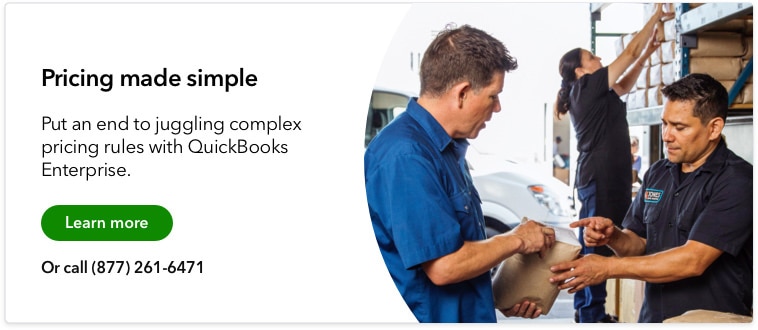Bundle pricing involves piecing together a set of associated products and charging one price for that array of items. The asking price for the whole collection, sometimes known as a “product bundle,” would be less than the sum of the parts. The strategy not only relates to physical products but also common service options.

How to use bundle pricing to optimize revenue
What is bundle pricing?
Bundled pricing is a pricing strategy initiated by retailers, service providers, or direct-to-consumer manufacturers that wish to increase overall sales volume by offering a number of products or programs for one fixed price. The seller offers a discount on each of the goods or services in the bundled package, trading lower prices and margins on each component for higher revenues on each unit sale.
A retailer might put together a complementary product package that includes products from three different manufacturers. From a service business perspective, a Software-as-a-service (Saas) provider may bundle a primary app with complementary products from other software development companies.
What is an example of bundle pricing?
You don’t have to search far to find a solid example of bundle pricing. This type of advanced pricing strategy factors into numerous consumer or business purchase decisions.
For example, in place of installing individual programs on internal company servers, many current software solutions are sold on a subscription basis and accessed through the cloud. You might see a software purveyor offer its standalone word processing solution for $25 per month per user or $300 annually. The spreadsheet program might also cost $300 per year in and of itself but when purchased together as a bundled software solution, the seller might offer a discount of 20% on the package or a bundled price of $480 annually. Spread those savings out across an employee population, and a business should realize significant savings in operating expenses.
Two types of bundle pricing strategies
Under the bundle pricing strategy, there are two basic types of bundling: pure bundling and mixed bundling.
Pure bundling
Pure bundling strategies feature multiple complementary products packaged together in an offer that provides more value to the customer while increasing business revenue. Perhaps the best way to illustrate pure bundling is to reverse engineer a bundled product package.
When a new customer is looking to purchase a cable service, they are offered different tiers of pure bundled packages. They may only watch cable news and not sports, but cable services don’t unbundle channel sections. Bundled cable packages enable cable services to combine large selections of TV channels, offering more value to the customer, while generating more revenue than an a la carte model would.
Here are a few more related pricing strategies that fall under the pure bundling category:
- Leader bundling occurs when a premier good is discounted and packaged together with an accessory or ancillary product. A television manufacturer may ask $1,999 for a 55-inch LED smart TV if you were to purchase a soundbar with it. Without the speaker setup, you might pay $1,999 for the TV by itself.
- Mixed-leader bundling allows a customer to purchase the core good only, but the complementary item(s) may be exclusive to the bundle and not available for separate purchase.
- Joint bundling sees two related and similarly priced products paired together, like shampoo and conditioner. You can buy them separately, but the manufacturer often packages these complementary products together and sells the bundle at a small discount to generate more revenue.
Mixed bundling
To some extent, mixed bundling does allow a consumer to customize a package deal to their liking. The number of choices a buyer has will fall into a limited range depending on the seller and service. But, freedom exists for a consumer to tailor a package suited to meet their needs.
Consider your local fast-food restaurant, which offers a lunch special (or value meal) for a bundle price that includes a sandwich, side, and medium drink. The restaurant gives customers the ability to choose from a select mix of food and drink menu items to put together their lunch combo. For a small discount on all three items priced separately, the restaurant drives increased revenue by incenting more customers to order the lunch special, rather than just ordering a sandwich.
Through the mixed bundling method, the consumer realizes value and has a say in what they choose to eat.
How bundle pricing affects consumers
If you choose to implement bundling into your pricing strategies, it’s important to understand how your customer’s behavior might change in response to a pricing shift. For customers who crave value or are sensitive to price, product bundling can often be an effective way to increase sales volume. With any price bundling or marketing strategy, it’s beneficial to understand the psychology of your customers.
Bundle pricing works well in the retail arena because a consumer feels like they’re getting more bang for their buck, and sometimes more just feels better. If you’re buying a camera, it’s difficult to ignore a deal that includes a spare battery, some extra storage devices, and a case. Since you’d likely acquire those ancillary items in the future anyway, buying them in a bundle and ultimately paying less for the camera (the most expensive item of the four) makes fiscal sense for the value shopper.
However, while the core or leader product might be desirable to your customer, the remaining items could be viewed less favorably. If you’re attempting to bundle items that aren’t complementary alongside a popular product, customers may not see the added value in the bundle and you could miss out on sales as a result.
Bundle pricing advantages
A bundle price has many advantages for your business:
- The practice can convey clear, simple, and measurable value propositions to existing and prospective customers. Pricing transparency with packaged offers allows a buyer to easily compare the cost of individual products against total cost of the bundle.
- Perhaps you haven’t marketed ancillary items as vigorously as you have core or leader products. Bundling may call attention to the quality and compatibility of new products or accessories that you hadn’t been able to promote because of budgetary reasons or priority concerns.
- Sometimes bundling can help eliminate the paradox of choice and simplify the decision to buy. Customers may view the packaging of ancillary products as a recommendation. And that implication can remove the chaos from a consumer’s thought process, which helps trigger a purchase.
Bundle pricing disadvantages
If you’re considering using a bundled price, also be aware of the potential downside:
- While price bundling appeals to price-sensitive customers , that same buyer characteristic can work against the strategy. It’s possible that a customer has a fixed budget in mind for the core product, and the ideas of spending beyond that limit may scare away a prospect.
- If a value-oriented buyer cannot quickly quantify savings because of a lack of available price information on ancillary products, that value proposition becomes less of a motivator. Without that pricing transparency, the purchase decision becomes less impulsive and more rigorous, possibly causing the customer to pass on the offer.
- By relegating a new core product to bundle pricing only, you run the risk of poor sales volume if a customer has no need or desire for the ancillary products contained in the deal. Limiting selection exclusively to bundling may force a customer to feel that freedom of choice is being removed from the equation.
When is product bundle pricing right for your business?
Price bundling is a good strategy for businesses that offer a variety of complementary inventory.
For example, a sporting goods company can bundle a tennis racket with a pack of tennis balls at a slightly discounted price point than purchasing the two products separately. While this provides added perceived value to customers, it also increases a company’s average order value and introduces customers to products they may never have purchased.
Companies can also use price bundling to move slower-selling products or excess inventory. By combining these as add-ons to more popular products, price bundling can help get rid of inventory that would otherwise be left sitting on the shelves. The strategy is also a good way to balance different products with high profit margins and low profit margins.
Finally, price bundling is beneficial for businesses in competitive industries. An attractive bundle can help differentiate your offerings and draw in more potential customers.
Unlock the potential of pricing power
By combining complementary products or services for customers, your business can increase average order values, driving increased revenue. Bundled pricing enables you to offer customers a suite of products that meets their needs at a cheaper price than if they bought the items separately.
Experimenting with pricing models is a powerful way to optimize revenue generation, giving your business a way to boost sales and introduce customers to more of what you offer.












